Extraordinary discovery in the heart of Rome. The Colosseum Archaeological Park, as part of a study and research project, has in fact unearthed some rooms of a luxurious domus of the late Republican age, of which some wall structures had been excavated in 2018, and once existed exactly in thearea where, in the Augustan age, the Horrea Agrippiana, the famous warehouses along the vicus Tuscus (a commercial road connecting the river port on the Tiber and the Roman Forum) built by Augustus’ son-in-law Marcus Vipsanius Agrippa, were constructed.
Behind the Horrea, between the storehouses and the slopes of the Palatine Hill, the domus is multi-storied, probably articulated in terraces and characterized by at least three building phases, datable between the second half of the 2nd century BC and the end of the 1st century BC. Distributed around an atrium/garden, the domus features, as its main room, the specus aestivus, a banquet hall imitating a grotto, used during the summer season and originally enlivened by spectacular water games thanks to the passage of some lead fistulas (pipes) between the decorated walls.
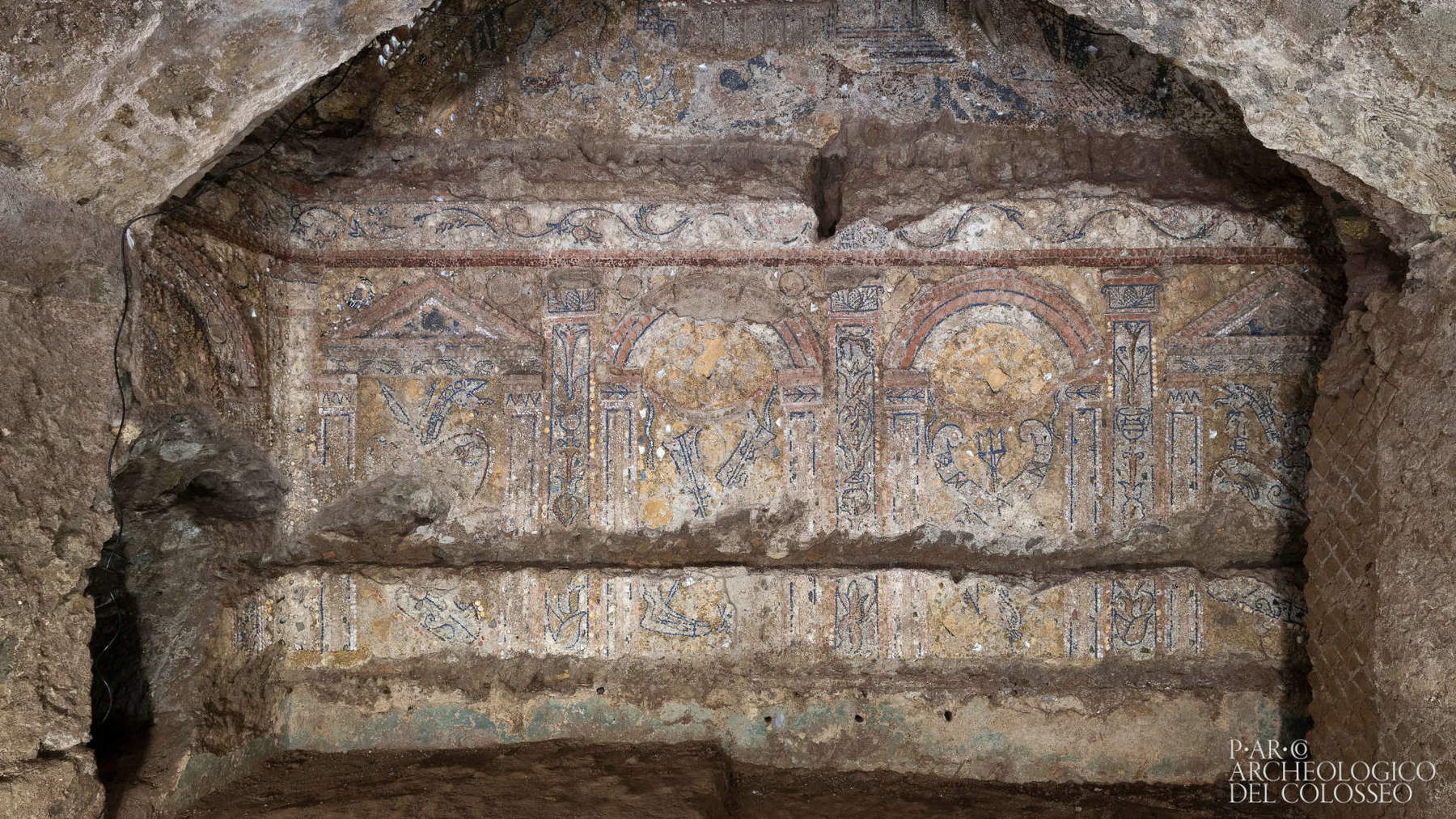
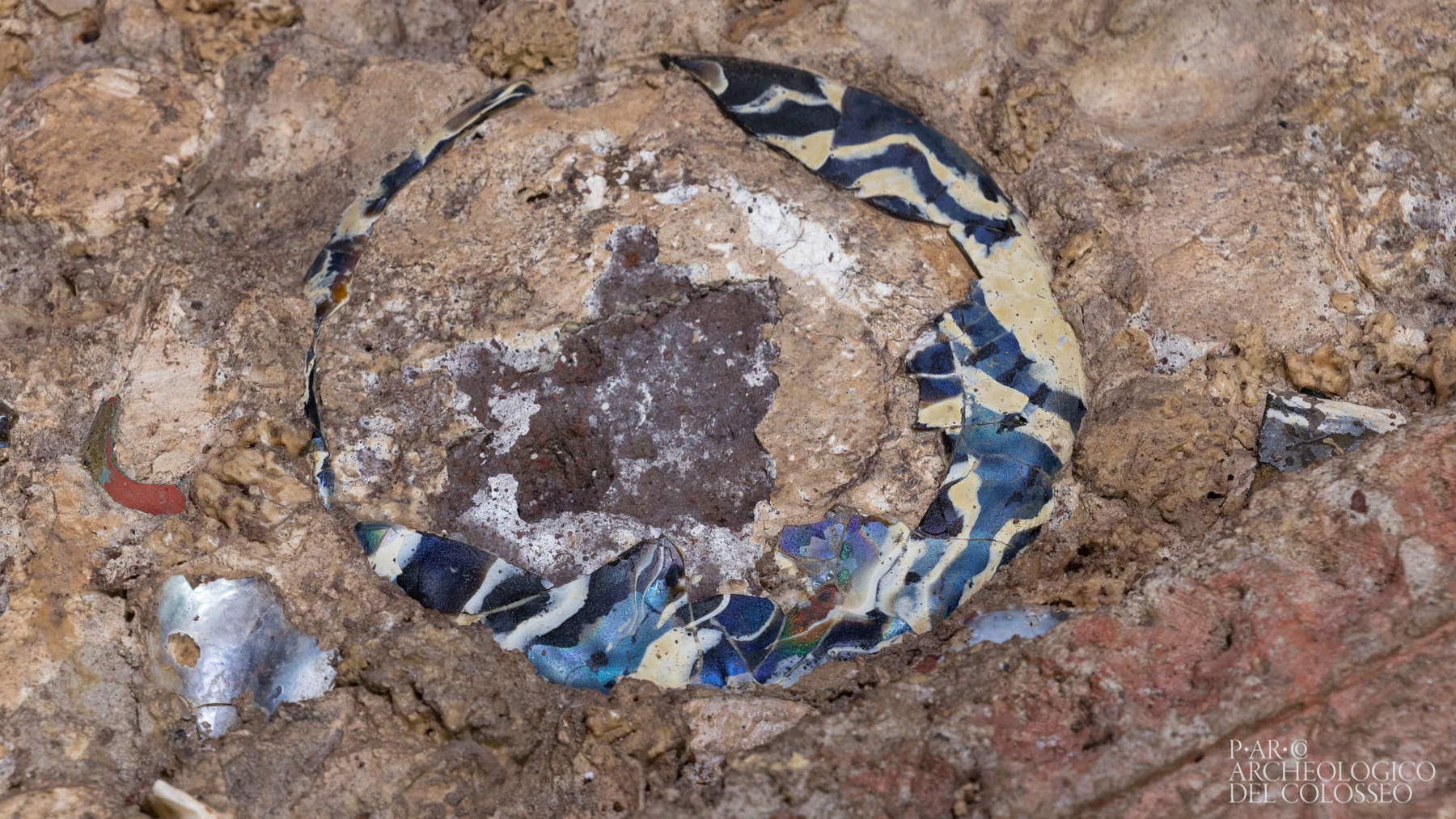
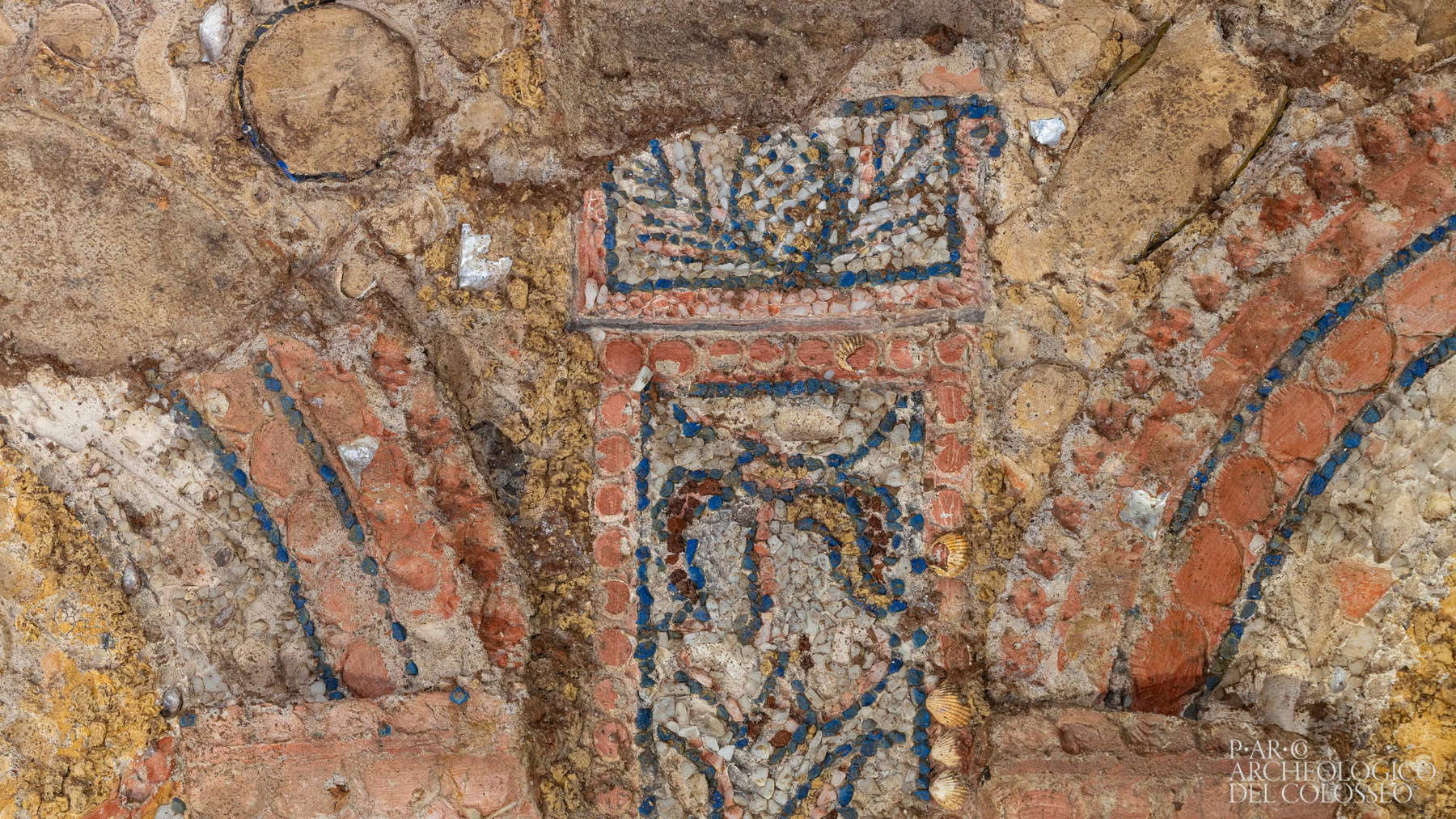
What makes the discovery exceptional, the Colosseum Archaeological Park points out, is the discovery, in this room, of an extraordinary wall covering in so-called “rustic” mosaic, which, in terms of the complexity of the scenes depicted and the chronology, is unparalleled. Consisting of shells of different types, tiles of Egyptian blue, precious glass, minute flakes of white marble or other types of stone, tartars (i.e., fragments of spongy travertine) and cretons of pozzolan bound by mortar and warps, the mosaic, which dates to the last decades of the second century B.C., presents a complex sequence of figured scenes.
The new covering occupies the entire large back wall of the specus, which originally was also intended to cover much of the two long side walls of the room: but later building interventions have erased all traces of it. The decoration involved the passage of a number of plumbee fistulas (pipes) that were part of a hydraulic game that, through gushing and flowing, poured water into basins at floor level, cheering and refreshing those present.
As far as has been highlighted and readable so far, the back wall of the specus is occupied by a rustic mosaic decoration with an architectural elevation reminiscent of that of theatrical sets in the Hellenistic tradition, articulated in four aedicules, defined by pilasters, decorated with vases from which water gushes or with lotus and vine leaves and ending in capitals occupied by a pine cone and pine needles.
The aediculae are ornamented with motifs of Celtic arms, prows of ships with trident, and helms with triremes, alluding perhaps to a dual triumph, terrestrial and naval, of the owner of the domus. In the pile of weapons he distinguishes well a helmet, an arrowhead, the hilt of a sword, oval shields and the Gallic dragon-headed trumpet(carnyx). The type of weapons could point toward battles conducted against populations of Celtic stock, while the ships would bring back scenarios of Mediterranean naval conflicts. Above the aediculae appears a vegetal frieze with two volutes branching off from an acanthus leaf.

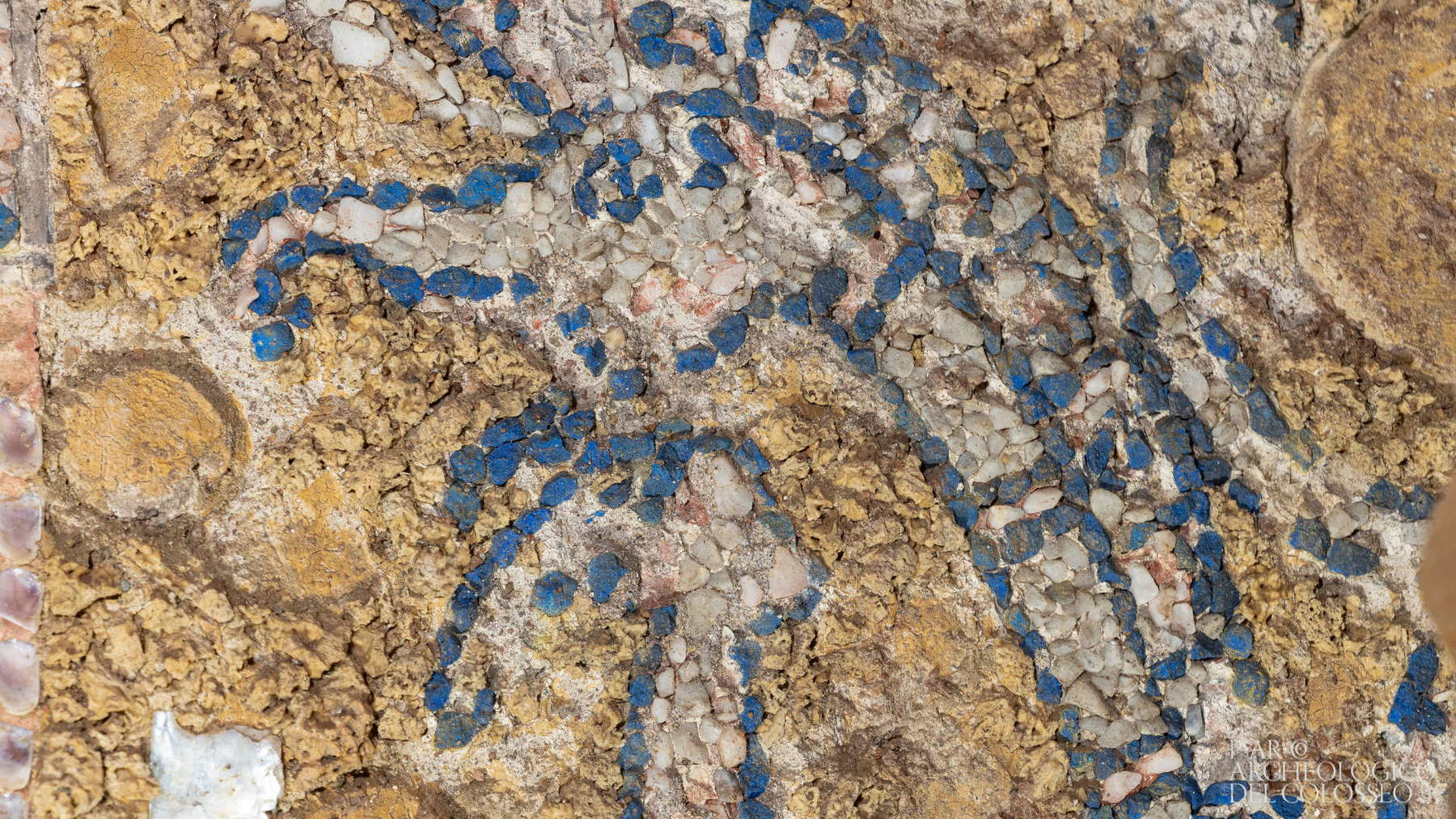
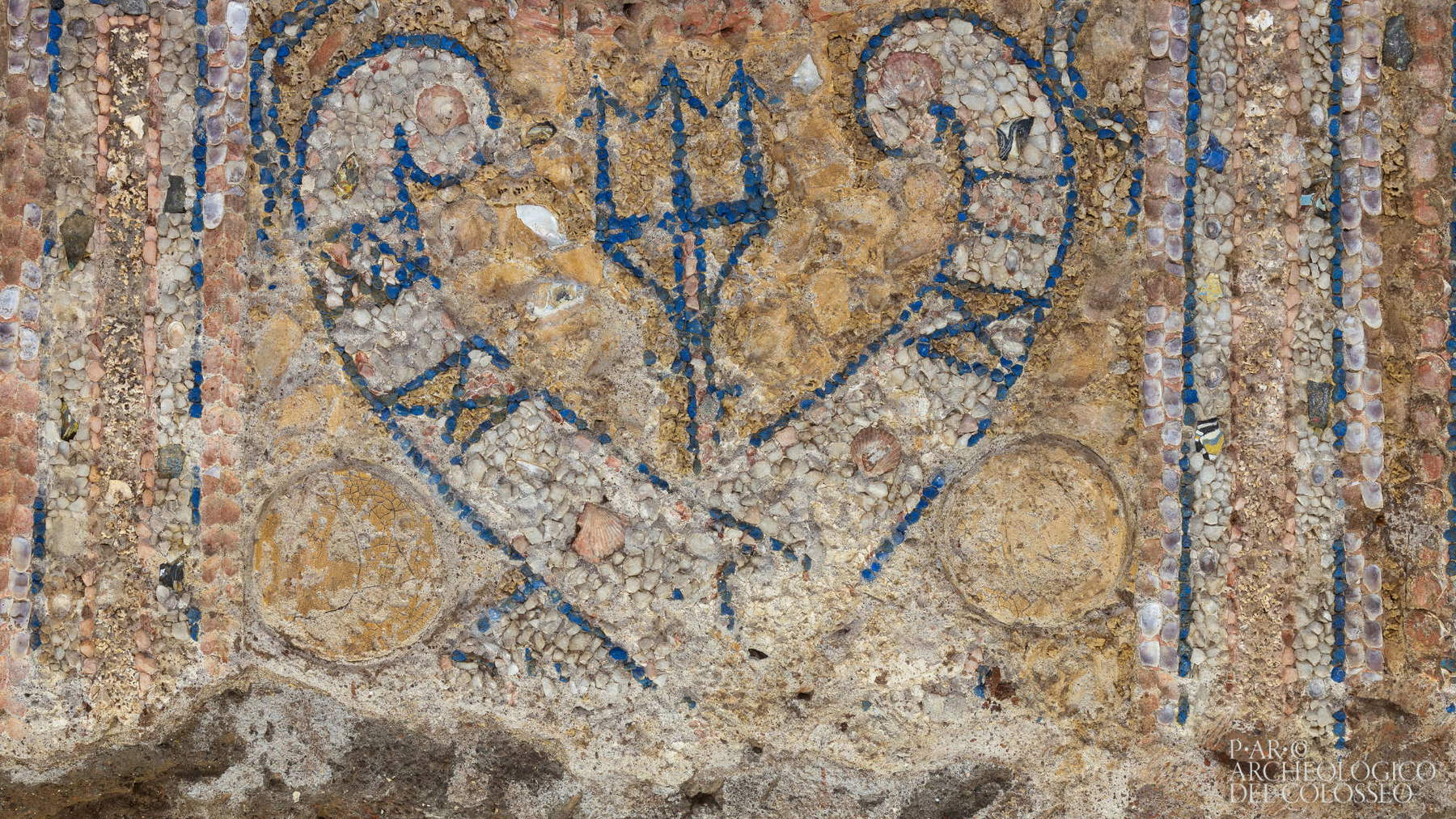
The large lunette above presents a complex landscape depiction of the Hellenistic-Alexandrian genre. One can recognize a pastoral scene with a palm tree, some animals (goats, dog, cattle) and a shepherd. Next to it appears the representation of a city by the sea with the cliff simulated with travertine tartars and the sea rendered with Egyptian blue tiles in which fish appear. A few towers, a building on steps, a portico within which a tower fits, and a few ships with oars are identified, one of which is clearly evident and larger with raised sails.
Well defined are the city walls with small towers. On the whole, we seem to be faced with a depiction of a chorographic type that could allude to a city/region actually subject to warlike conquest or administrative reorganization by the owner of the domus, belonging to an aristocratic personage, presumably of senatorial rank.
The ornamentation is distinguished by the use of polychrome glass characterized by different types of hot workmanship (millefiori or “ribbon”), used in fragments of reused artifacts, such as flat wands used cornices and architectural partitions, and in defined forms such as cups and weapons (of which only parts or impressions remain). These are matrix-produced, high-value glasses, predating those in use with the invention of the blowpipe in about the mid-first century BCE.
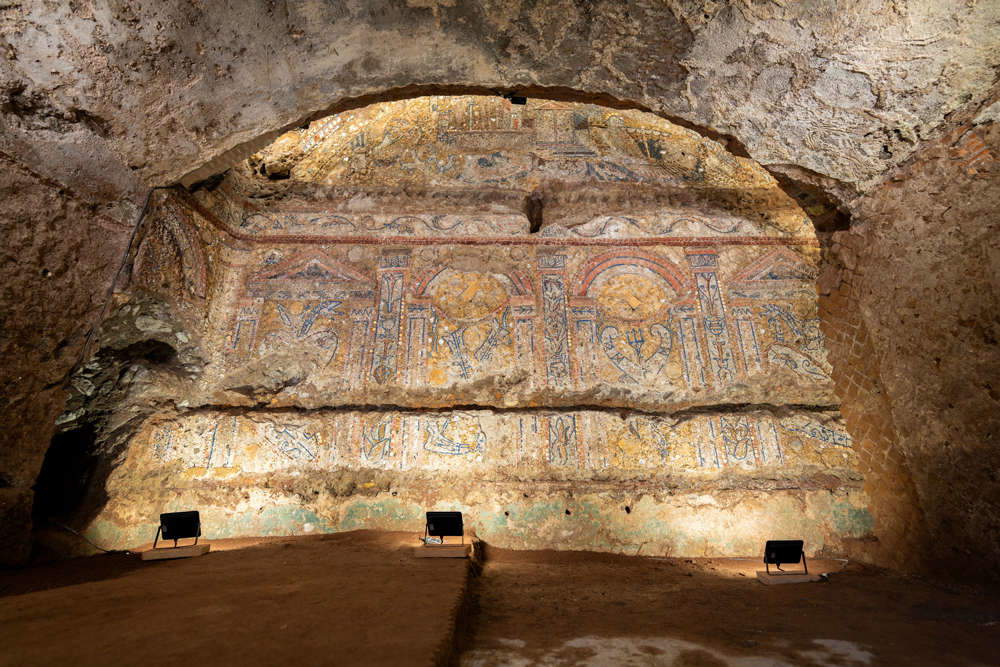
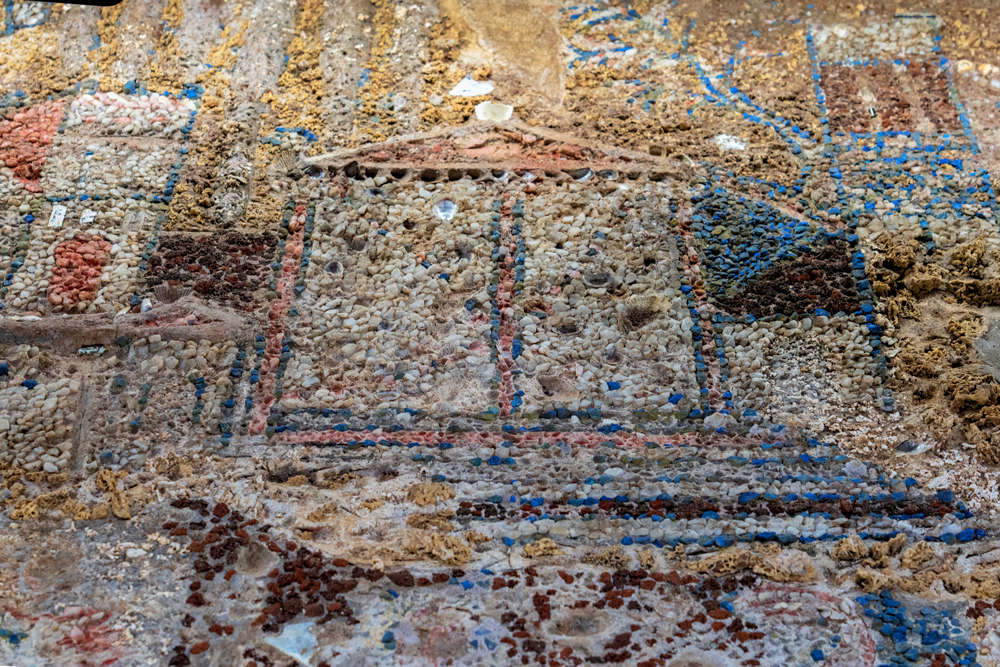
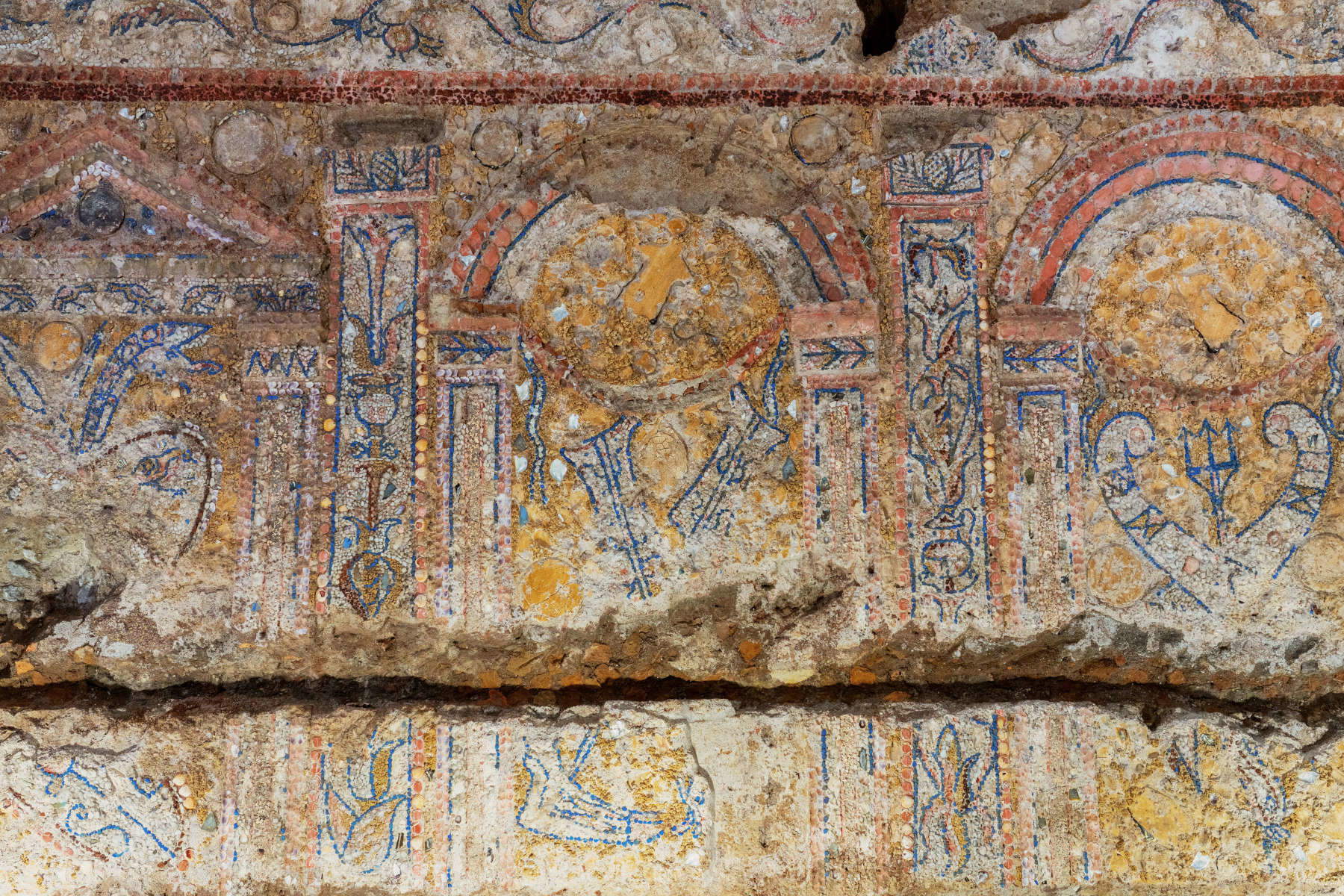
This extraordinary decoration is accompanied by coverings of a different but similarly high standard in other rooms of the domus. In one immediately adjacent to the specus, a white stucco cladding in figured relief with faux perspective architecture covered about 5 meters of wall height in a room presumably used for representational purposes.
On the whole, the domus qualifies as a residence in which is found early expression of that Asiatic luxuria that throughout the late republican age was a source of controversy and fierce political strife among aristocratic factions. As is well known, the literary sources relate much information about the many Roman aristocrats who, in the late republican age, had elected the Palatine as their neighborhood of choice residence. Here stood, articulated in blocks and neighborhoods, many dwellings of more or less famous personages, which archaeology has so far only to a small extent allowed to bring to light. The most famous of it is the House of the Griffins, but similar houses and of the same period have also been excavated for small portions in the area of the Domus Tiberiana, in the SO sector of the Palatine and along its northern slopes.
At present there is no epigraphic evidence to define with certainty the identity of the owners of the domus with specus estivo, who must have been a high-ranking personage of the Roman aristocracy, perhaps the winner of a dual naval and land battle.
“The discovery of a new domus with a room decorated with a truly extraordinary mosaic,” emphasizes Culture Minister Gennaro Sangiuliano, “represents an important result that demonstrates, once again, how much the Colosseum Archaeological Park and the Ministry of Culture are constantly committed to promoting research, knowledge, protection and enhancement of our extraordinary cultural heritage. The discovery then has an important scientific value that makes the domus even more relevant. After the reopening of the Domus Tiberiana and the improvement of the accessibility of the Flavian Amphitheater, with the inauguration of the elevator that now reaches the third order, the heart of Romanity has thus unveiled an authentic treasure, which we will be responsible for safeguarding and making accessible to the public.”
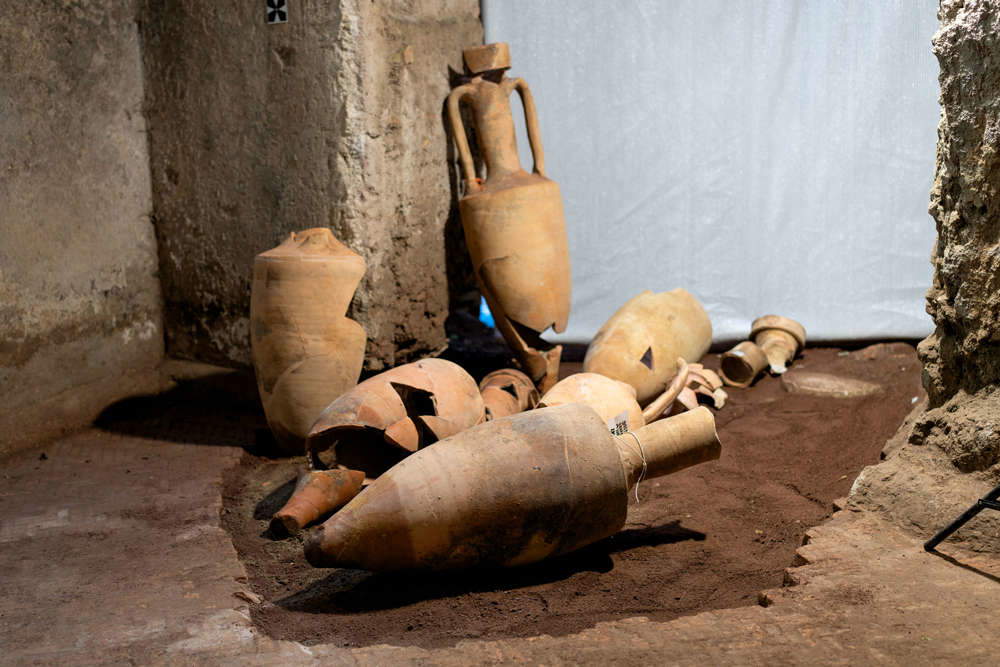


“This is an important result,” adds the director of the Colosseum Archaeological Park, Alfonsina Russo, “which repays a long work of study and research and is part of one of the Park’s priority objectives, that of knowledge and its dissemination. The archaeological excavation will be completed in the first months of 2024, and thereafter we will work intensively to make this place, among the most evocative in ancient Rome, accessible to the public as soon as possible.”
Taken as a whole, therefore, the domus qualifies as a residence in which is found early expression of that Asiatic luxuria that throughout the late republican age was a source of controversy and fierce political strife among aristocratic factions and that confirms what the sources say about the presence, with extensive residences, of exponents of great Roman senatorial families in the northwestern area of the Palatine. “An extraordinary discovery,” the park points out, “which brings to light an authentic jewel that, at the conclusion of the excavations and restorations, will be added to the new and diversified visiting routes opened in recent years and that make up the varied cultural proposal of the Colosseum Archaeological Park.”
 |
| Outstanding discovery in the heart of Rome: a domus with mosaic decorations without comparison |
Warning: the translation into English of the original Italian article was created using automatic tools. We undertake to review all articles, but we do not guarantee the total absence of inaccuracies in the translation due to the program. You can find the original by clicking on the ITA button. If you find any mistake,please contact us.